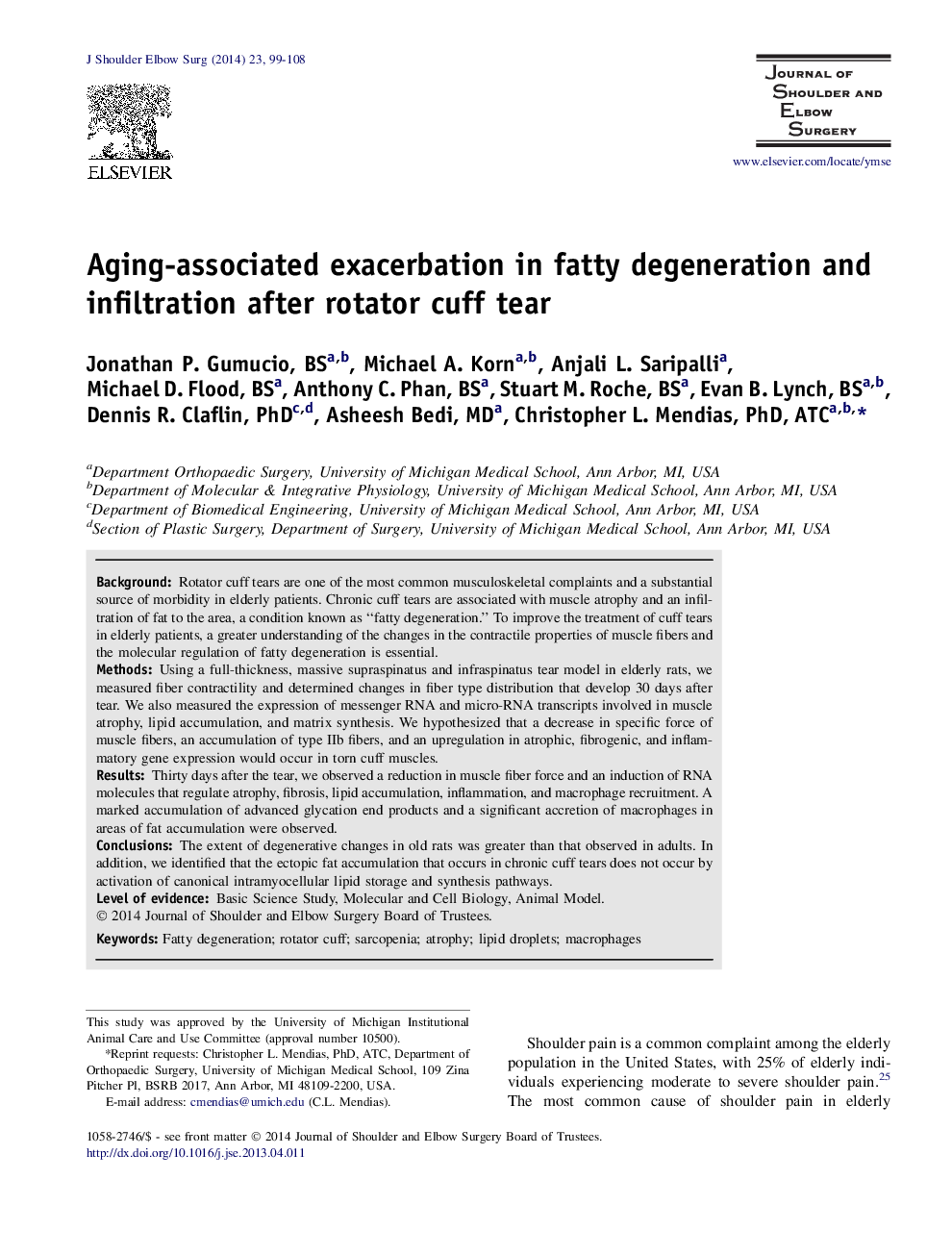| Article ID | Journal | Published Year | Pages | File Type |
|---|---|---|---|---|
| 4074636 | Journal of Shoulder and Elbow Surgery | 2014 | 10 Pages |
BackgroundRotator cuff tears are one of the most common musculoskeletal complaints and a substantial source of morbidity in elderly patients. Chronic cuff tears are associated with muscle atrophy and an infiltration of fat to the area, a condition known as “fatty degeneration.” To improve the treatment of cuff tears in elderly patients, a greater understanding of the changes in the contractile properties of muscle fibers and the molecular regulation of fatty degeneration is essential.MethodsUsing a full-thickness, massive supraspinatus and infraspinatus tear model in elderly rats, we measured fiber contractility and determined changes in fiber type distribution that develop 30 days after tear. We also measured the expression of messenger RNA and micro-RNA transcripts involved in muscle atrophy, lipid accumulation, and matrix synthesis. We hypothesized that a decrease in specific force of muscle fibers, an accumulation of type IIb fibers, and an upregulation in atrophic, fibrogenic, and inflammatory gene expression would occur in torn cuff muscles.ResultsThirty days after the tear, we observed a reduction in muscle fiber force and an induction of RNA molecules that regulate atrophy, fibrosis, lipid accumulation, inflammation, and macrophage recruitment. A marked accumulation of advanced glycation end products and a significant accretion of macrophages in areas of fat accumulation were observed.ConclusionsThe extent of degenerative changes in old rats was greater than that observed in adults. In addition, we identified that the ectopic fat accumulation that occurs in chronic cuff tears does not occur by activation of canonical intramyocellular lipid storage and synthesis pathways.
